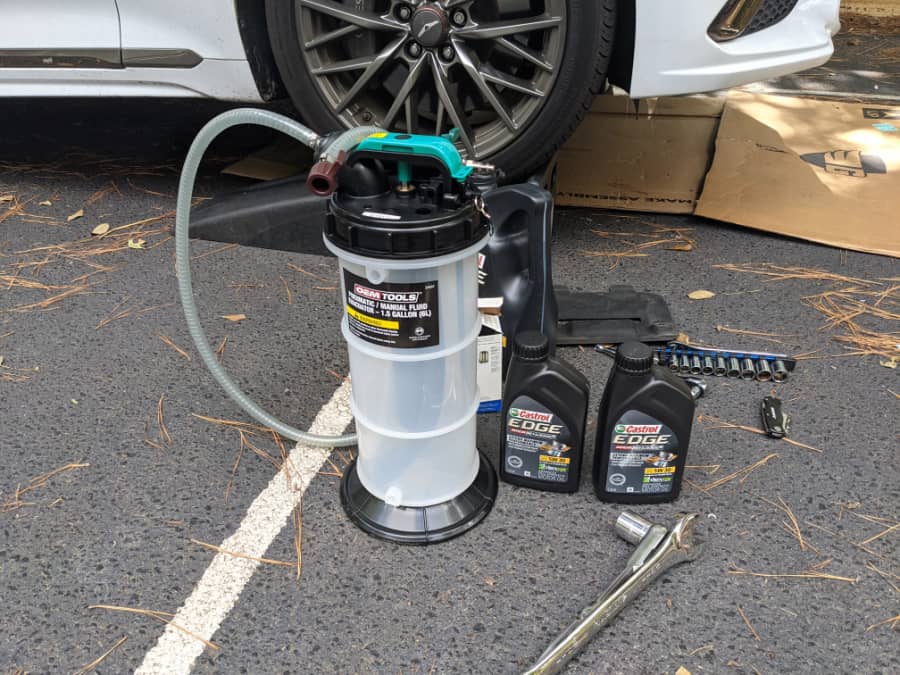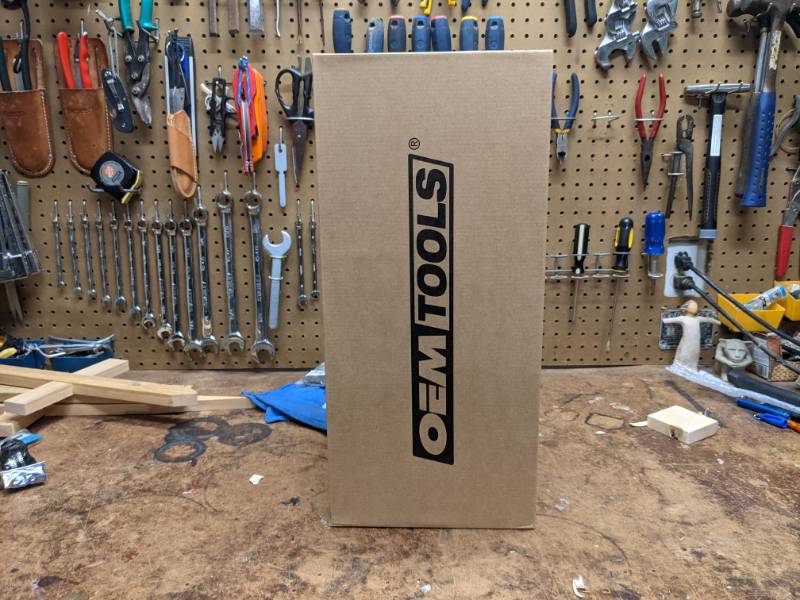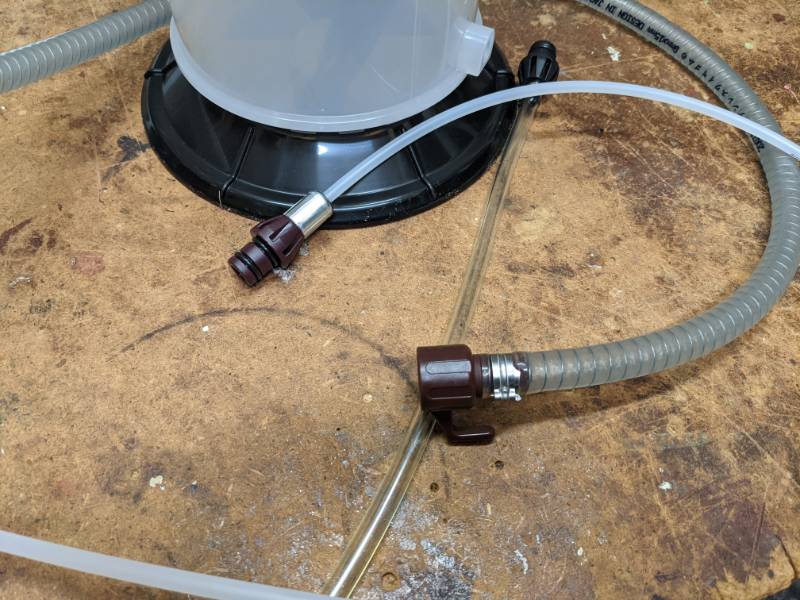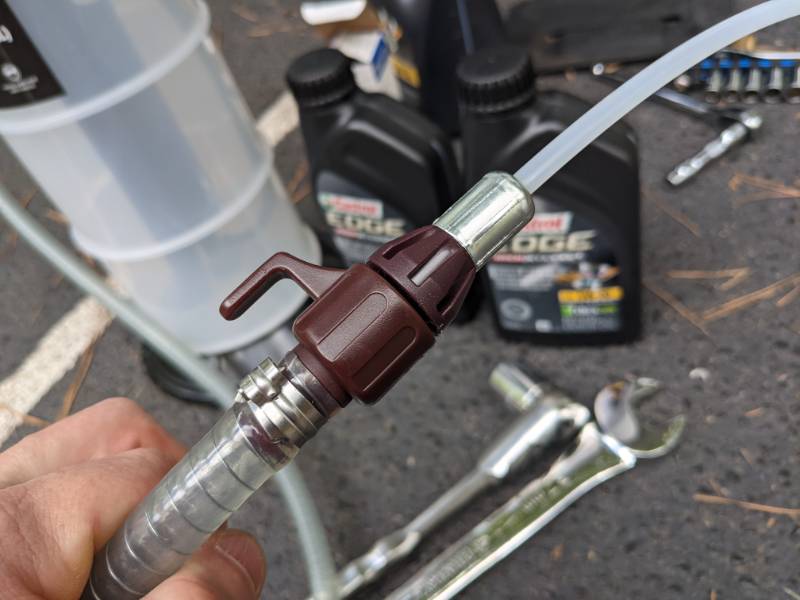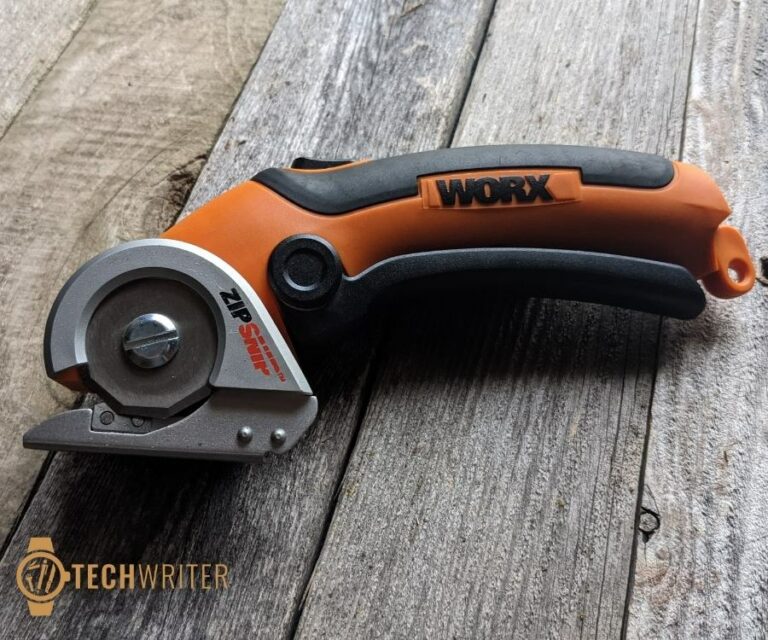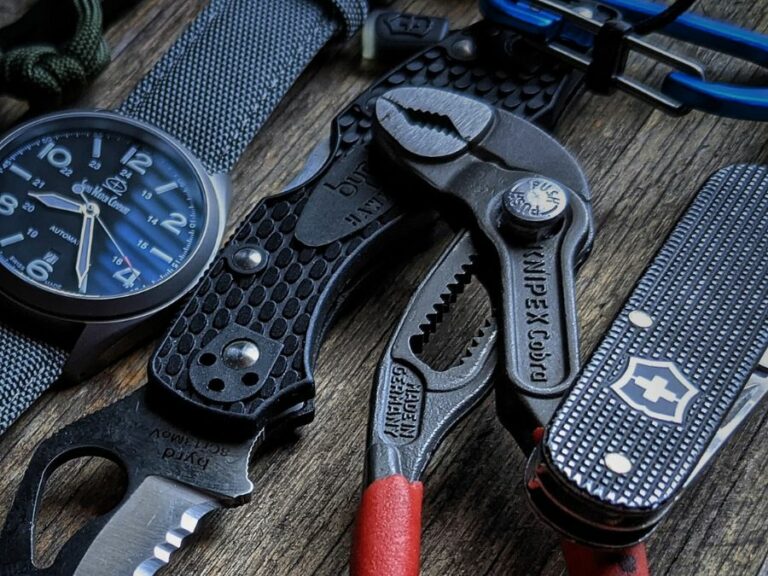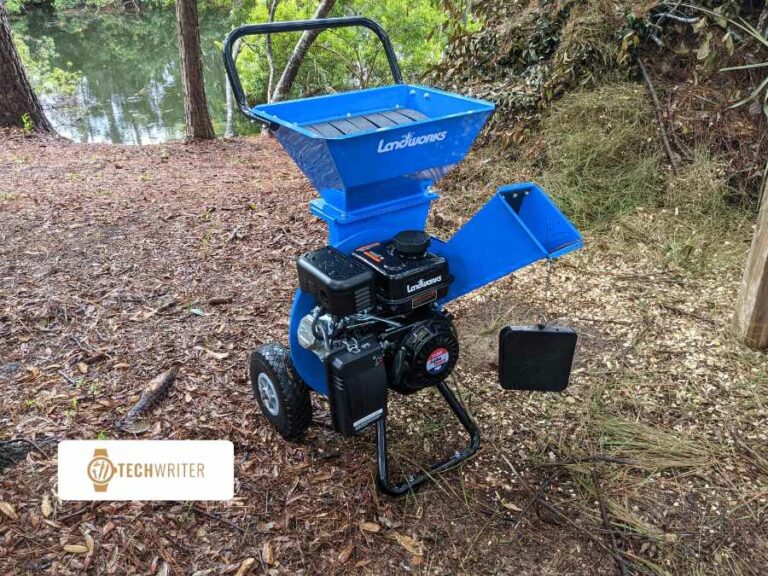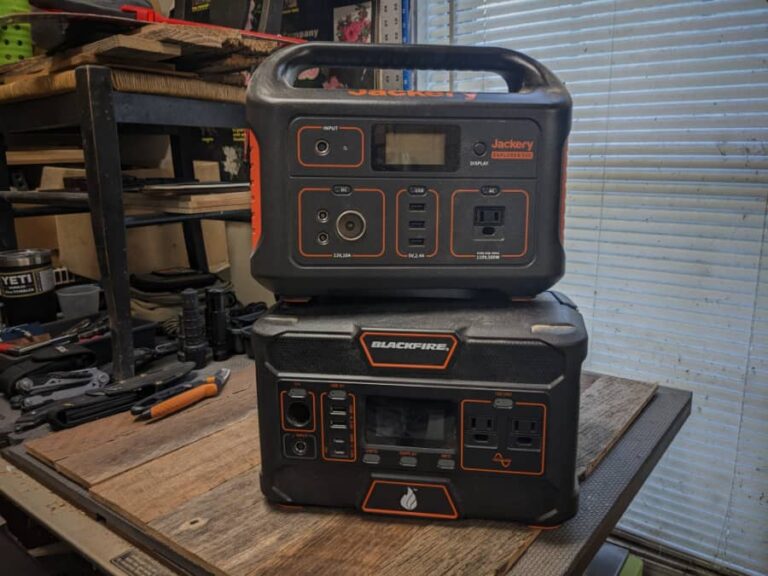OEM TOOLS 24937 Pneumatic/Manual Fluid Extractor Review
I recently picked up the 6 Liter OEM Tools Fluid Extractor so I could change the oil on my car without having to get out the ramps, climb under it and make a simple oil change into a big production. A fluid extractor can save you a ton of time when it comes to oil changes, draining fluids from tool and power equipment and getting machines drained and winterized.
What is a pneumatic oil extractor?
A pneumatic fluid extractor allows you to suck or vacuum the oil out of your engine and oil pan from the dipstick tube, thus saving you a lot of time and aggravation in the process. Using an air compressor, the extractor creates a vacuum for you to remove the fluid or engine oil.
I first learned about vacuuming out fluids and oil when I worked in a German car repair shop. Many BMW’s and Mercedes have oil filters that are on top of the engine and easily accessible. This is the perfect scenario for using an extractor. With the car on the ground you can do an oil change in a matter of minutes with little fuss.
A fluid extractor also works on a variety of other vehicles / engines, etc, such as lawn mowers, snow blowers, wood chippers, etc. Fluid extractors are not for gas!! I have a wood chipper and removing the drain plug to change the oil is a pain, it’s 100 times easier to vacuum out the old oil and refill it with fresh oil. There is no end in the uses a fluid extractor can offer. You can use it for changing power steering fluid, transmission fluid, gear oil, and other fluid types.
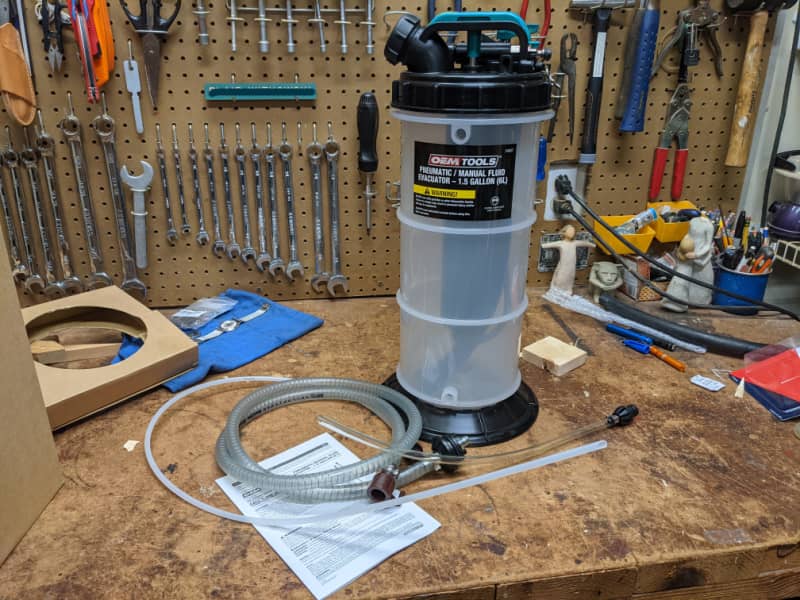
Today I am reviewing the OEM Tools 6 Liter Extractor I bought off of Amazon, there is also a larger 9.5 Liter model available here. I originally thought that my oil filter housing on my car was behind the engine up high and easily accessible from the engine bay. Since the dealer is super backed up and it takes 3 months to get an oil change I thought I would do it myself and buy an extractor. I have done hundreds of oil changes and knew it would save me a ton of time to just do it at home. I did learn later that my filter was not where I thought it was, that was the model right before mine. Nonetheless, an extractor was still going to be easier in my case to remove the engine oil.
If you’re reading this, then you too might be trying to decide which fluid extractor to buy. Well, I can save you a little research and recommend the OEM Tools version. In the shop I worked at we had a huge commercial extractor on wheels, obvious overkill for the home mechanic. So I started looking around for an extractor and I looked at the Harbor Freight model, a junker at Advance Auto Parts and several on Amazon. Sometimes it can be very frustrating reading the online reviews because you never really know the knowledge level and skill level of the person using the tool. So often they give a low score to an item when it’s really user error or they are unskilled in some way. Or they will knock off a star for shipping damage.
This was the case when looking for an extractor. The reviews were all over the place! Several brands did have a lot of reviews which is always a good sign and many reviewers also posted pictures. This is always super helpful. I find picking products like this is like choosing a movie to watch, we spend as much time hunting as we do actually watching the movie. So, after several searches and researching a bunch of extractors, I choose the OEM Tools model# 24937.
Unboxing The OEM Tools Fluid Extractor #24937
No fancy packaging here and even less in the directions category. There is a small pamphlet that is supposed to be directions, but it is short and vague. I did have a little trouble setting up the hoses because it’s unclear whether the main vacuum tube fitting goes over or under the nipple. Sounds confusing, but you can see in the pictures I took. The OEM Tools fluid extractor comes with one main vacuum hose that you attach a smaller feeder tube that gets inserted in the dipstick or other orifice where you plan to pull the oil out of. The tubes are long enough for most fluid extraction tasks.
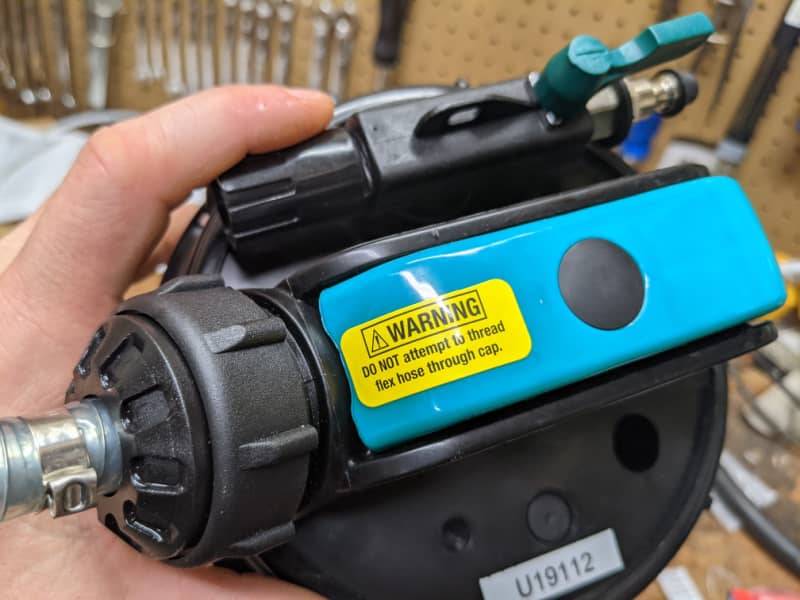
How do you use the OEM tools oil extractor?
The model I bought also has a manual action pump so you don’t need an air compressor. However, I never used that function. If you are not sure how these extractors work, they have a fitting on them that is attached to an air compressor. The air that flows into the unit creates a vacuum effect on the tube and that is what sucks or extracts the fluid into the reservoir.
The use and operation is pretty straight forward as you can see from the pictures and video I made. You attach a compressor, insert the tube, slowly open the valve and begin sucking the oil out of your engine. When the reservoir is almost filled, you shut the valve and empty the fluid / oil.
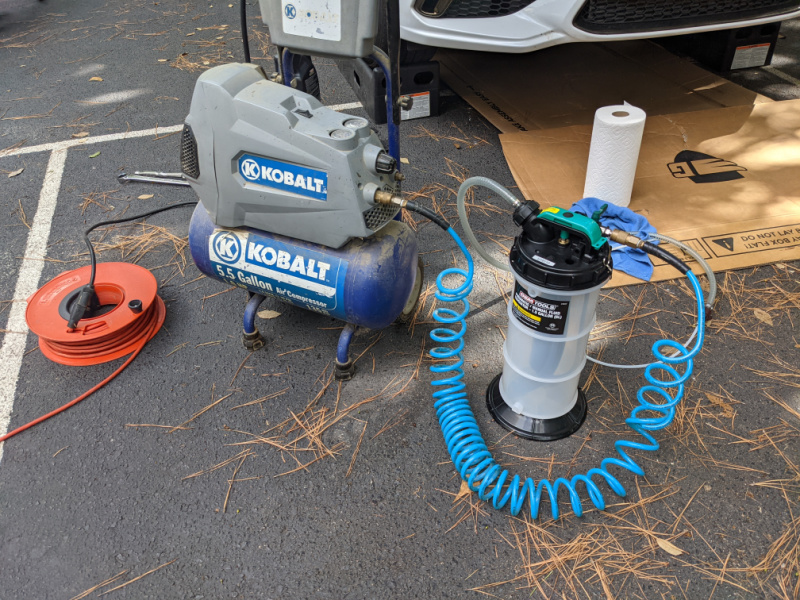
A quick note here, depending on the oil weight and fluid, you do not need to run the compressor the entire time you are extracting the fluid. The unit builds up the vacuum and will continue to extract fluid. However, it will keep it running at a higher volume if you keep the compressor on. I have used the OEM Tools extractor twice and both times I used a small compressor from Lowes and it was more than adequate.
If you have never used an extractor before you will be amazed. If you have used one in the past, you will appreciate the quality of this model. As of this review the extractor is $115 on Amazon. The price does fluctuate and I have seen it slightly cheaper. For the money, I was impressed overall. The unit feels solid, it worked perfectly and was easy to use. Actually I was surprised at the whole thing. I had low expectations considering the price and a bunch of reviews I read. Again, I think some of the complaints against the extractor are unwarranted. You can tell it’s solidly constructed when you unbow it. It is all plastic, but feels heavy duty.
Is The OEM Tools Fluid Extractor Worth The Money?
I say yes, the OEM Tools is definitely worth the money and I found it works much better than expected. In time savings alone you will make you money back. I would like to see OEM tools to have a better set of instructions for the average person. I am very handy and a tool junkie. To the regular weekend warrior, some of the setup might seem confusing at first.

Blair Witkowski is an avid watch nut, loves pocket knives and flashlights, and when he is not trying to be a good dad to his nine kids, you will find him running or posting pics on Instagram. Besides writing articles for Tech Writer EDC he is also the founder of Lowcountry Style & Living. In addition to writing, he is focused on improving his client’s websites for his other passion, Search Engine Optimization. His wife Jennifer and he live in coastal South Carolina.

